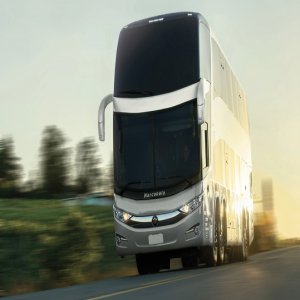Mexico, Strategically Important for Its Crucial Location

STORY INLINE POST
Q: With the new production capacity from JATCO II, how close are you to reaching your 1.7 million unit goal?
A: Last September we began operations at our second site which increased our volume capacity significantly. At the beginning we only ran one shift because we did not have enough workforce to maintain regular operation, but that slowly changed and we are now running two shifts at both sites. JATCO II has reached a maximum capacity of 400,000 units per year, while JATCO I is producing 1.3 million. With this in mind, the 1.7 million mark has already been exceeded. Nissan North America is allocated 70% of our production, while the remaining 30% goes to Nissan Mexicana. Currently, our biggest focus is Mexico, with production and provision to the NAFTA region based from this strategic point.
Q: Now that Nissan’s A2 plant is also running at full capacity, how capable are you of handling the demand that comes from Nissan?
A: JATCO’s current maximum capacity is a little lower than Nissan’s A2 plant, but those small margins are compensated with the support of other regions. We have already invested a lot of resources in East Asia, and our production there is higher, which allows us to experiment with volumes.
Q: Are you interested in establishing additional business relationships to complement your relationship with Nissan? A: Most of our volumes go to Nissan, but we are holding negotiations to attract new business. OEMs have the same requirements in terms of quality, cost, and delivery, but as with any new business venture, systems can vary among manufacturers, and we must adapt to those differences. Our products can be technically adapted to fit their specifications, but we must find ways to create a mutually beneficial link in areas such as delivery information connectivity. We have well-established connections with Nissan, but if we began working with a company that has a different communication system, we would have to match their structure.
Q: What challenges have you faced while developing CVT transmissions?
A: CVT is simpler than Step AT, but it is highly complicated compared to a manual transmission. There is a need for extreme accuracy in the development of each component, which is the most difficult aspect from a technical standpoint. On the other hand, our production line must have highly skilled people and state-of-the-art technology. Half of our workforce have been with the company for three years, which is a short period of time, and requires education on the production processes of a complicated product. After hiring our employees, we teach them some basic knowledge in our Regional Training Center (RTC), where they learn the specifications of our products and production processes. Thereafter, we provide additional training for our assembly, machining, or casting procedures before placing our new employees in the actual production line.
Q: How are you promoting the advantages of CVT with automakers?
A: High fuel efficiency is the biggest benefit that a CVT transmission will offer to small vehicles. In addition, we must keep a standardized size for our products, as manufacturers will not be able to perform installations if the CVT is bigger than expected. Our CVT has ideal dimensions, but if an OEM has different requirements we can adjust to them.
Q: What challenges have you faced with hybrid technology, since it is relatively new to Mexico?
A: Our hybrid model is similar to the conventional CVT, the difference being the use of a motor instead of a torque convertor. The motor is imported from Japan due to a difficulty of sourcing this technology in Mexico, which makes it hard to produce the hybrid model. Our main market for this product is the NAFTA region.
Q: What are the specifics of the Jatco Excellent Production System (JEPS)?
A: We established JEPS about 15 years ago in Japan and as soon as Jatco was founded in Mexico, we applied this approach. JEPS is designed to simplify our production processes, helping us to further minimize our inventory, while ensuring that our facility continues to operate fluidly. It is relatively easy to minimize our inventory, but if deliveries are disrupted, operations become problematic. JEPS encapsulates a complete process to make the production system efficient, and is similar to JIT strategies.






















